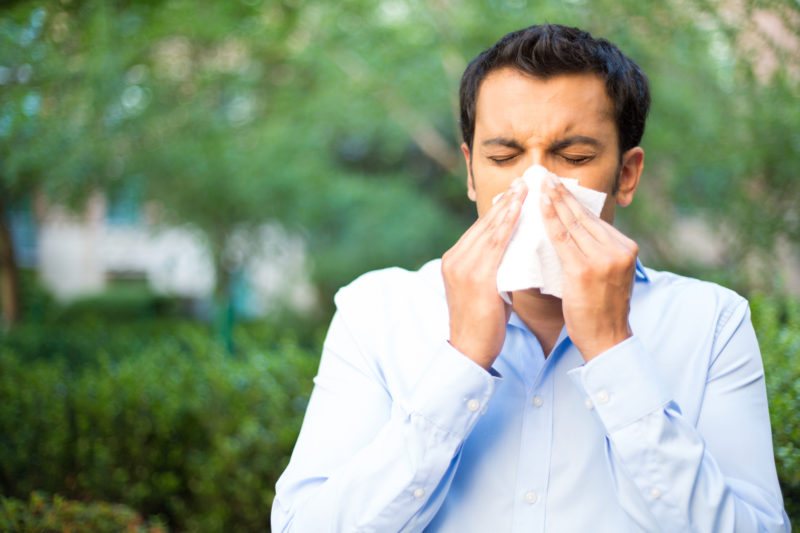Springtime is Seasonal Allergy Time

Posted on April 7, 2017
April showers bring May flowers and lots of pollen, too. Pollen is a fine, powdery substance that is released by trees and plants, like ragweed, grass and hay. In the spring, pollen and other outdoor allergens can trigger allergies. These are known as seasonal allergies, sometimes called “hay fever.”
If it’s a rainy spring, a wet basement can cause some molds to grow. These can also make allergies act up.
But if you don’t have a history of allergies, how can you tell if it’s an allergy or a cold?
Ways to tell allergies from a cold
- If your symptoms last longer than a week, it might be allergies, not a cold. Colds usually go away after about a week.
- If you have itchy, watery eyes or an itchy nose, it’s probably allergies.
- If you can’t stop sneezing when you go outside, allergies.
- If you have an itchy throat or a cough that feels more like a tickle than a deeper chest cough, it’s most likely allergies.
If you have these symptoms, you are not alone. About 50 million people in the United States suffer from allergies.
How to limit pollen exposure
- Pollens are usually released early in the morning. Staying indoors and keeping windows closed during the early part of the day can be helpful.
- Washing bedding and pillowcases often can help reduce pollen in the home.
- After being outside, wash your face and hands and run a damp washcloth over your hair to wipe off some of the pollen.
But don’t stop going outside. It is important to get outside, be active and play, especially if you have children.
If allergy symptoms are interfering with a healthy lifestyle, talk to your primary care doctor. There are medications that can help relieve allergy symptoms.
Comments are currently closed.








